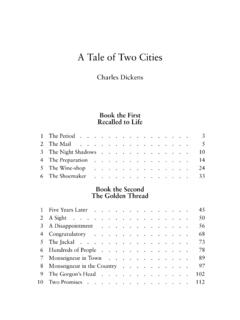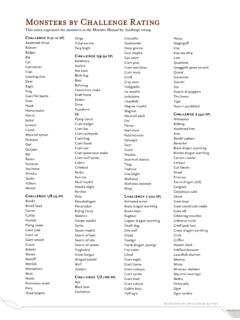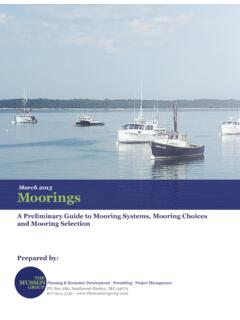Transcription of OF THE UNITED STATES AIR FORCE KOREAN WAR - AF
1 KOREAN WAR1950-1953 Teacher Resource GuideContentsIntroduction 2 Air Superiority 4 guard and Reserves 10 Air Power Partners 11 Interdiction 12 Close Air Support 14 Strategic Bombing 17 Reconnaissance 18 Airlift 19 Special Operations 21 Air Rescue 22 Aeromedical Evacuation 24 Medal of Honor 26 POWs 28 Ceasefire 29 The Commitment Remains 30 Audiovisual Loan Program 31A product of the NMUSAF Education DivisionNATIONAL MUSEUMOF THE UNITED STATES AIR FORCE 2 | Visit for lesson plans and moreKOREAN WARAn Introduction The Air FORCE is on trial in Korea. - Gen. Hoyt S. Vandenberg, USAF Chief of Staff, 1950 The Air FORCE was only three years old as a separate service when North Korea invaded South Korea in the summer of 1950. The next three years brought significant changes in technology, roles and tactics, marking the beginning of the modern Air FORCE .
2 When World War II ended, the UNITED STATES ac-cepted the surrender of the Japanese in Korea south of the 38th parallel, while the Soviet Union accepted the Japanese surrender north of that line. Although the western Allies intended that Korea become an inde-pendent democracy, the Soviet Union had other 1947 the UNITED STATES put the problem of Ko-rean independence before the UNITED Nations. When the UN ordered free elections throughout the country, the Soviet Union refused to allow them in the north. Free elections in the southern half of Korea in May of 1948 established the Republic of Korea. The Soviets created a rival communist government in the north, the People s Democratic Republic of Korea. With governments established in both halves of Korea, the Soviets announced their intention to leave the country and challenged the UNITED STATES to do the same. After training a small national FORCE for internal security in South Korea, the UNITED STATES departed, leaving only a few military advisors.
3 In the north, the Soviets oversaw the creation of the well-trained and equipped North KOREAN People s Army with Soviet tanks, heavy artillery and aircraft. After assuring the military superiority of North Korea, the Soviets left in 1949. Less than a year later, border skirmishes be-tween north and south exploded into all-out war with the North KOREAN invasion of South Korea on June 25, and UN RolesThe UNITED STATES was committed to defending South Korea against communist aggression. Although the UNITED STATES had no official treaty obligating it to South Korea, President Harry Truman ordered forces in the Far East into action on June 27, and three days later authorized air attacks in North Korea. He also began to mobilize reserves for the coming battles. The KOREAN crisis was also the first major test for the five-year-old UNITED Nations. On June 25, 1950, the UNITED Nations Security Council met to address the crisis. The Soviet Union, boycotting the UN be-cause the international body did not recognize com-munist rule in China, did not attend.
4 On June 27, the proposed the UN intervene in Korea with armed FORCE . With the Soviets absent and unable to veto the measure, the resolution passed. In addition to South Korea and the , 15 other member nations sent military forces to stop the communist in KoreaThe USAF had numerous air bases in Korea, and many of these were former Japanese airfields. The spelling of KOREAN locations on maps varied greatly, and villages had a KOREAN and a Japanese name. A K number identified individual air bases in both northern and southern Korea to prevent confusion among locations. K-1 Pusan WestK-2 Taegu No. 1 K-3 Pohangdong K-4 Sachon K-5 Taejon K-6 Pyongtaek K-7 Kwangju K-8 Kunsan K-9 Pusan East K-10 Chinhae K-11 Ulsan K-12 Muan K-13 Suwon K-14 Kimpo K-15 Mokpo K-16 Seoul (Yongdungpo) K-17 Ongin K-18 Kangnung (Koryo) K-19 Haeju (Kaishu)(continued on next page)(Introduction continued)K-20 Sinmak K-21 Pyonggang K-22 Onjong-ni K-23 Pyongyang K-24 Pyongyang East K-25 Wonsan K-26 Sondok K-27 Yonpo K-28 Hamhung West K-29 Sinanju K-30 Sinuiju K-31 Kilchu (Kisshu) K-32 Oesicho-dong K-33 Hoemon (Kaibun) K-34 Chongjin (Seishin) K-35 Hoeryong (Kainsei) K-36 Kanggye No.
5 1 K-37 Taegu No. 2 K-38 WonjuK-39 Cheju-do No. 1 K-40 Cheju-do No. 2 K-41 Chungju K-42 Andong No. 2 K-43 Kyongju K-44 Changhowon-ni K-45 Yoju K-46 Hoengsong K-47 Chunchon K-48 Iri K-49 Yangsu-ri K-50 Sokcho-ri K-51 Inje K-52 Yanggu K-53 (not completed)K-54 (not completed) K-55 Osan-ni K-56 (not completed) K-57 KwangjuDust, Mud and Snow: An Airman s Life in KoreaLife on the K-bases remained fairly basic through-out the KOREAN War. USAF personnel generally lived in tents with wooden or concrete floors and stored their meager possessions in furniture cobbled together from scrap wood or crates. These tents were blistering hot in the summer and freezing cold in the winter.(continued on next page)Register online for upcoming educational programs | 3 The KOREAN climate was one of extremes, fromthe humid summer heat to the bitter winter photo of K-9 (Pusan East) in June 1953 shows a typical KOREAN air base at the end of the war. There are temporary corrugated metal buildings in the middle, while on the right are tent barracks.
6 The B-26 aircraft on the left are parked in the open, exposed to the availableThis information is also available in a Power-Point presentation. View the table of con-tents at and visit to download the presentation.(Introduction continued)The vast unpaved areas on air bases were dusty when dry, and they turned to mud with spring rains. While air crews did their best to fight boredom between ten-sion-filled missions, maintenance personnel worked long hours in poor weather conditions to keep worn and damaged aircraft in Green to Air FORCE BlueAfter the Air FORCE became a separate service in 1947, it created new blue uniforms. Even so, Air FORCE personnel during the KOREAN War continued to wear Army uniforms from existing stocks, including the famed pinks and greens clothing and crush cap hats from World War II. In some cases, Airmen wore a combination of Army green and Air FORCE blue the enlisted, yellow Army rank chevrons were replaced with silver Air FORCE stripes.
7 Another no-table change was the renaming of some enlisted ranks in 1952 The Army ranks of private and corporal became Airman. An interesting result of this uniform change was the nickname brown-shoe Air FORCE . The old Army uniform had brown shoes, while the new Air FORCE blue uniform had black shoes. So, brown-shoe Air FORCE referred to the old Army Air Forces or to a person who had served in the | Visit for lesson plans and moreThe varied uniforms illustrate the USAF in transition during the KOREAN War. Some wear the old uniform of the USAAF while others wear newly issued USAF blues or a combination of Superiority: Controlling the Sky As it happened, the air battle was short and sweet. Air supremacy over Korea was quickly established. - Lt. Gen. E. George Stratemeyer, Far East Air Forces Commander during the first year of warControlling the skies over Korea was the USAF s primary mission. After defeating the small North KOREAN Air FORCE , USAF pilots were challenged by Soviet and later Chinese and North KOREAN pi-lots in nimble, swept-wing MiG-15 jets.
8 The winning combination of the F-86 Sabre and experienced USAF pilots, however, ensured UN ground forces need not fear the enemy s air power. In Korea, the air superiority fight reflected the end of propeller-driven fighters and the supremacy of jet aircraft. At the beginning of the war in June 1950, the USAF Far East Air Forces had the piston-engine F-51D Mustang, the all-weather F-82 Twin Mustang, and the jet-propelled, straight-winged F-80 Shooting Star. Skilled USAF pilots overwhelmed the inexperi-enced pilots of the North KOREAN Air FORCE (NKAF), who were equipped with about 140 World War II-era piston-engine defeating the NKAF, UN air forces enjoyed a period of air supremacy until the arrival of the MiG-15 in November 1950. Flown by Soviet pilots, the MiG-15 threatened to wrest control of the air away UN forces it seriously outclassed the best USAF fighter in Korea, the F-80C. Even so, F-80 pilots were(continued on next page)All-weather F-82G fighters at an air base in Japan.
9 The USAF was forced to base some of its fighter units in Japan when communist forcesoverran South KOREAN bases in 1950 and online for upcoming educational programs | 5(Air Superiority continued)able to turn inside the MiGs when attacked and scored some victories. The USAF counter to the MiG threat was the swept-wing, F-86 Sabre jet fighter. The F-86A entered combat in mid-December and quickly proved its MiG-15 versus the F-86 in Korea has long been the subject of comparison. While the MiG-15 enjoyed some performance advantages against early model F-86s, it also suffered serious vices that killed a number of its pilots. The F-86 was a better gun platform and could dive faster. Ultimately, any MiG-15 performance advantages over the Sabre were more than offset by the superior training of American pilots. When the communists tried to challenge UN air superiority, they suffered heavy losses from USAF Sabres almost every combination of the F-86 Sabre and superior USAF pilots denied the communist armies air cover and gave protection to UN forces on the ground.
10 Ex-cept on isolated occasions, UN ground troops seldom saw a communist aircraft, while enemy soldiers suf-fered under relentless UN air attack. In controlling the skies, the USAF performed brilliantly and success-fully in its first combat test as a separate First Aerial VictoriesOn the morning of June 26, 1950, one day after the start of the war, the Air FORCE s 68th Fighter (All-Weather) Squadron sent four F-82G aircraft from Itazuke Air Base in Japan to protect two Norwegian ships evacuating civilians from Seoul. While covering a motor convoy of civilians on the Seoul-Inchon road, two of the F-82s were attacked by two Soviet-made La-7 fighters, presumably flown by North KOREAN pilots. Rather than endanger the civilians below, the two F-82s pulled up into the clouds instead of engag-ing the next day, North KOREAN aircraft attacked the early morning USAF flight. This time, however, the F-82 crews accepted the challenge and shot down three enemy F-82 piloted by Lt.







